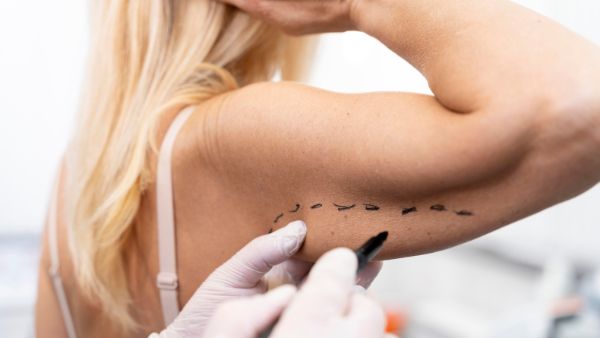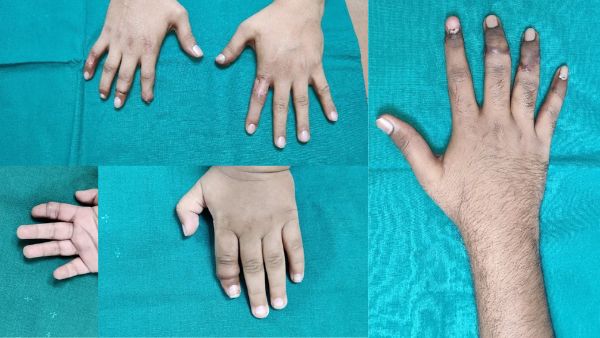Just In
- 5 min ago

- 17 hrs ago

- 17 hrs ago

- 20 hrs ago

Don't Miss
- Education
 Cochin Shipyard, IIM Kozhikode Invites Applications For USHUS Program To Support Maritime Startups
Cochin Shipyard, IIM Kozhikode Invites Applications For USHUS Program To Support Maritime Startups - Movies
 Pavi Caretaker Box Office Collection Day 1 Prediction: Dileep's Movie Expected To Open Strongly
Pavi Caretaker Box Office Collection Day 1 Prediction: Dileep's Movie Expected To Open Strongly - Sports
 Who Won Yesterday's IPL Match 41? SRH vs RCB, IPL 2024 on April 25: Royal Challengers Bangalore End Losing Streak
Who Won Yesterday's IPL Match 41? SRH vs RCB, IPL 2024 on April 25: Royal Challengers Bangalore End Losing Streak - Finance
 Bajaj Group Stock Declares Rs. 60/Share Dividend: Buy Ahead of Record Date On 28 June?
Bajaj Group Stock Declares Rs. 60/Share Dividend: Buy Ahead of Record Date On 28 June? - News
 MEA Dismisses US Human Rights Report On Manipur As 'Biased And Misinformed'
MEA Dismisses US Human Rights Report On Manipur As 'Biased And Misinformed' - Automobiles
 Royal Enfield Unveils Revolutionary Rentals & Tours Service: Check Out All Details Here
Royal Enfield Unveils Revolutionary Rentals & Tours Service: Check Out All Details Here - Technology
 Elon Musk’s X Is Launching a TV App Similar to YouTube for Watching Videos
Elon Musk’s X Is Launching a TV App Similar to YouTube for Watching Videos - Travel
 Escape to Kalimpong, Gangtok, and Darjeeling with IRCTC's Tour Package; Check Itinerary
Escape to Kalimpong, Gangtok, and Darjeeling with IRCTC's Tour Package; Check Itinerary
National Plastic Surgery Day 2022: Microsurgical Techniques For Attaching Amputated Fingers
Every 15 July, India observes the National Day of Plastic and Reconstructive Surgery. Dr S Raja Sabapathy, the President of the Association of Plastic Surgeons of India, introduced the concept of National Plastic Surgery Day in 2011.
'Plastic surgery originated from India, and Sushruta is hailed by all as the founder of plastic surgery. So now we can also be proud that from India, we conceptualized World Plastic Surgery Day,' said Dr Sabapathy.
World Plastic Surgery Day was established following a presentation by APSI President Rakesh Khazanchi at the World Council of Leaders, a body consisting of the presidents of all national associations that agreed that 15 July should be observed as World Plastic Surgery Day.
Coimbatore-based plastic surgeon S. Rama Sabapathy introduced the concept of National Plastic Surgery Day in 2011 when he was president of the American Society of Plastic Surgeons. To commemorate the inaugural year, every plastic surgeon in the country performed a free procedure.
In the event of National Plastic Surgery Day, let's look at how microsurgical techniques can be used to attach amputations.

What Are Microsurgical Techniques? Who Is It Beneficial For?
Reconstructive microsurgery involves using specialized operating microscopes and precision instruments to repair intricate structures such as blood vessels and nerves less than a few millimetres in diameter. Individuals affected by trauma, cancer, or congenital anomalies have benefited greatly from this field in returning to form and function [1].
Plastic surgeons use microsurgery to perform various procedures, including free tissue transfers, reattachment of severed parts and composite tissue transplants. A wide range of microsurgical procedures is available, each highly individualized. Typically, microsurgical reconstruction is reserved for complex reconstructive surgery cases when other options (primary closure, skin grafts, local or regional flap transfers) have failed to provide adequate results [2].
Common Microsurgery Procedures
- Reconstruction of the breast using free tissue transfer
- Reconstruction of the head and neck using free tissue transfer
- Functioning free muscle transfer for certain types of muscle paralysis
- Lymphatic reconstruction
- Complex wound reconstruction
- Toe transplantation
- Nerve repair and grafting
Apollo Hospitals Perform Microsurgical Techniques To Attach Accidentally Amputated Fingers Of Two-Year-Old And Two Other Patients
Hand injuries are the most common injuries to the body. It accounts for approximately 40% of all injuries that occur to our bodies. Hand injuries are commonly caused by traffic, industrial, and domestic injuries.
Dr V Purushothaman and Dr Sabari Girish Ambat, Consultant Plastic Surgeons and their team recently reattached the fingers of three patients, a two-year-old child and two other youngsters who suffered a hand injury while cleaning a bike chain.

Speaking about the remedies Dr V Purushothaman, Senior Consultant Plastic Surgeon, Apollo First Med Hospitals, said, 'Among the domestic injuries, door crush injury is very common in children. Similarly, knife cut injuries and mixie injuries are very common in ladies. The majority of such injuries are managed on an outpatient basis. Some injuries are severe, leading to amputation of the fingers. Such injuries require urgent medical attention.'
A small child aged one year nine months was brought into the emergency of Apollo First Med Kilpauk with his index fingertip amputated accidentally in between a glass door. Since the child was brought to the emergency within 2 hours and was taken up for surgery immediately, the surgery involved reattaching the bones, tendons, nerves, and blood vessels which are less than 0.3 mm in diameter under an advanced microscope. Two other patients had their fingers amputated in bike chain accidents.
Dr Sabari Girish Ambat, the Senior Consultant Plastic Surgeon, also added, 'The public should be educated about the dangers of cleaning the bike chain in a similar fashion and strictly advised to clean with the engine always switched off. An amputated finger or part of the finger should be transported to a specialized Hand Trauma Centre within 6 to 8 hours. Properly preserved and minimally crushed fingers can be put back to attain most of the functions as before.'
Points to keep in mind while handling the amputated part:
- The amputated part needs to be preserved properly before transporting [3].
- Wash with running water to remove any contaminants like grease, sand and gravel.
- Then put the cleaned finger into a plastic cover and zip seal it.
- To put the sealed cover with the finger into an ice-packed container (the ice should not come in direct contact with the amputated finger/part)
- The injured hand needs to be covered with a clean cloth or sterile pad and bandaged. The hand should be kept elevated above the heart level to prevent bleeding and reduce the pain.
With inputs from Apollo Hospitals press release.
-
 lifeHollywood Celebrities Who Have Aged Terribly!
lifeHollywood Celebrities Who Have Aged Terribly! -
 lifeCeleb Plastic Surgeries That Went Bad
lifeCeleb Plastic Surgeries That Went Bad -
 insyncCheryl Tiegs Plastic Surgery - A Truth?
insyncCheryl Tiegs Plastic Surgery - A Truth? -
 insyncAngelina Jolie's Plastic Surgery
insyncAngelina Jolie's Plastic Surgery -
 insyncHeidi Montag Hates Plastic Surgery
insyncHeidi Montag Hates Plastic Surgery -
 insyncBrad Pitt Basking In His New Look
insyncBrad Pitt Basking In His New Look -
 insyncBarrymore Is Not Fearful About Ageing
insyncBarrymore Is Not Fearful About Ageing -
 insyncMadonna To Undergo Look Renovation
insyncMadonna To Undergo Look Renovation -
 insyncHeidi Montag Loves Her Plastic Beauty
insyncHeidi Montag Loves Her Plastic Beauty -
 lifeA Knight's Skeleton Reveals Historical Secrets
lifeA Knight's Skeleton Reveals Historical Secrets -
 pulseA Medical Miracle
pulseA Medical Miracle -
 pulseLooks Matters The Most
pulseLooks Matters The Most


 Click it and Unblock the Notifications
Click it and Unblock the Notifications



